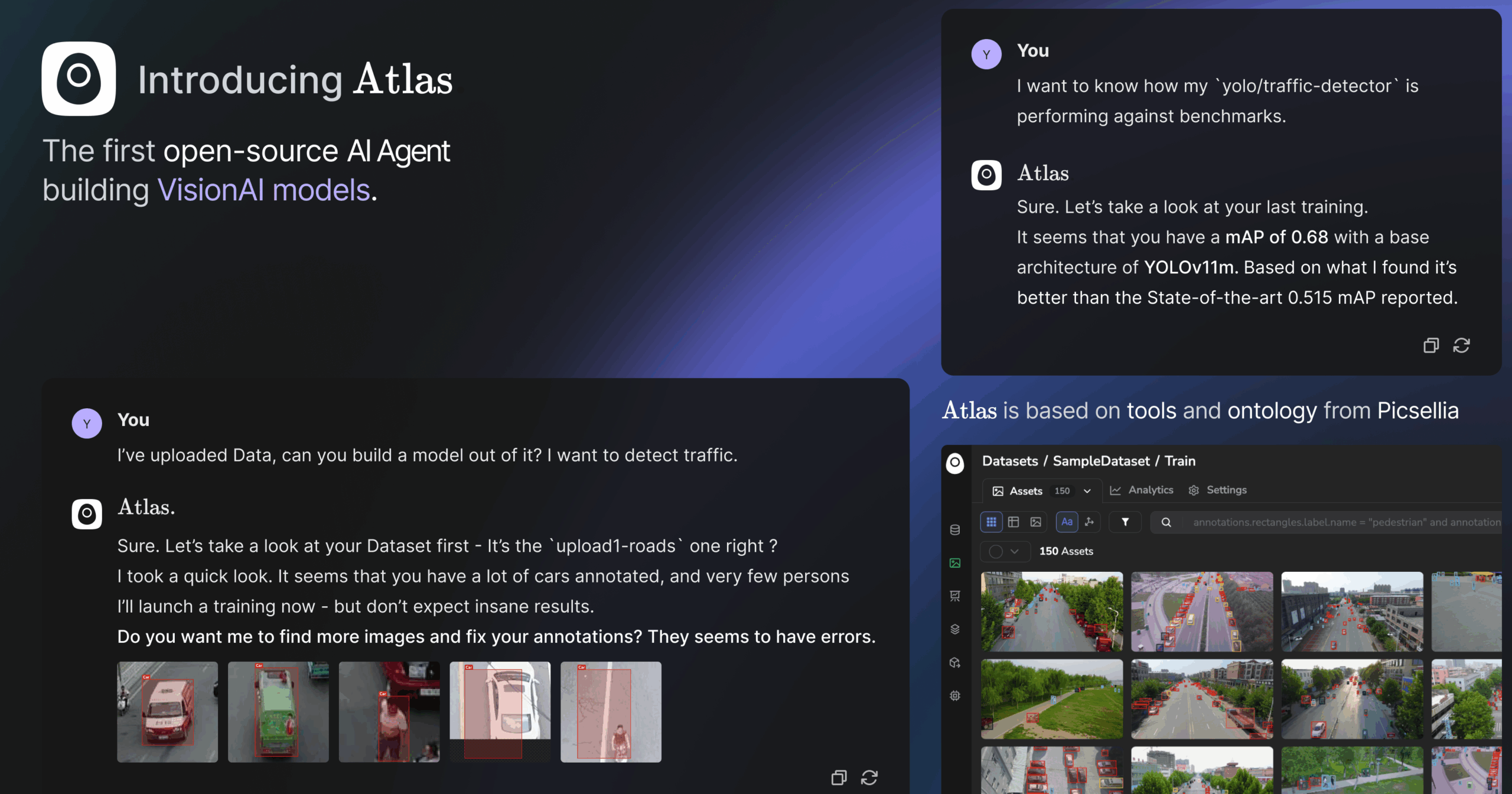Table of Contents
Overview
Tired of wrestling with complex code just to explore your computer vision datasets? Enter Picsellia Atlas, an open-source Vision AI Agent designed to revolutionize how you interact with visual data. Integrated seamlessly into the Picsellia platform, Atlas empowers you to use natural language to explore, label, and improve your models, all without writing a single line of code. Let’s dive into what makes this tool a potential game-changer for computer vision workflows.
Key Features
- Natural language interaction with visual datasets: Forget complicated queries. Simply ask Atlas questions using everyday language to analyze your images.
- Integrated into Picsellia’s MLOps platform: Atlas works harmoniously within the Picsellia ecosystem, streamlining your entire machine learning operations.
- Open-source and extensible: Customize and extend Atlas to fit your specific needs, thanks to its open-source nature.
- No-code environment: Access powerful computer vision capabilities without needing to be a coding expert.
- Supports dataset labeling and analysis: Atlas assists with crucial tasks like labeling, annotation checks, and identifying anomalies.
How It Works
Using Picsellia Atlas is surprisingly straightforward. Once you’re within the Picsellia platform, you can access Atlas and begin interacting with your visual datasets using natural language. For example, you could type a query like, “Find blurry images in my dataset.” Atlas then analyzes your data based on your request, automating tasks such as annotation checks, providing labeling suggestions, or even spotting anomalies that might otherwise go unnoticed. This intuitive approach significantly reduces the time and effort required for data exploration and preparation.
Use Cases
Here are some practical applications of Picsellia Atlas:
- Data cleaning and preparation in computer vision: Quickly identify and address issues like blurry images, mislabeled data, or outliers within your datasets.
- Exploratory analysis of image datasets: Gain a deeper understanding of your data by using natural language queries to uncover patterns and insights.
- Automating quality assurance in visual data: Ensure the quality of your visual data by automating checks for common issues and inconsistencies.
- Supporting ML model development workflows: Accelerate model development by streamlining data preparation and analysis tasks.
Pros & Cons
Now, let’s weigh the advantages and disadvantages of using Picsellia Atlas.
Advantages
- No-code access to complex CV operations makes computer vision accessible to a wider range of users.
- Simplifies dataset management, saving time and resources.
- Open-source and customizable, allowing you to tailor the tool to your specific needs.
Disadvantages
- Tied to Picsellia’s platform, meaning you need to be invested in their ecosystem to use Atlas.
- May not cover advanced CV tasks that require more specialized tools or coding.
- Natural language limits precision; complex queries might require more specific instructions.
How Does It Compare?
When considering alternatives, it’s helpful to see how Picsellia Atlas stacks up against the competition. Roboflow offers strong dataset management capabilities but lacks the conversational, natural language interface of Atlas. Encord focuses primarily on labeling and annotation but doesn’t provide the same level of natural language processing integration for data exploration.
Final Thoughts
Picsellia Atlas presents a compelling solution for simplifying computer vision workflows. Its no-code, natural language interface makes it an attractive option for those seeking to streamline data exploration, labeling, and model improvement. While its reliance on the Picsellia platform and limitations in handling highly complex tasks are worth considering, Atlas offers a valuable tool for enhancing productivity and accessibility in the world of computer vision.
